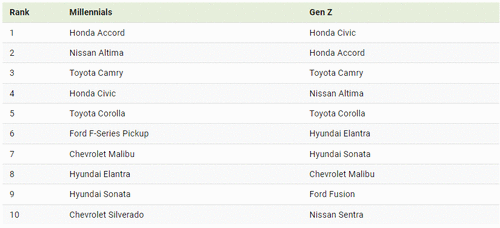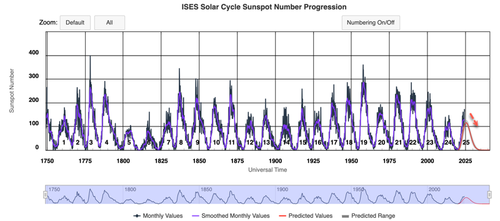Canada, AUKUS, And The Strategic Imperative Of Restraint
Authored by Andrew Latham via RealClearDefense,
When AUKUS—an unprecedented defense pact between the United States, the United Kingdom, and Australia—was announced in 2021, many Canadian defense commentators expressed concern that Canada’s exclusion from the agreement marked a significant setback.
To some, it signaled a diminution of Canada’s standing as a so-called middle power, a nation accustomed to “punching above its weight” in the international peace and security field. This perception led to calls for Canada to seek formal inclusion in the pact, particularly in Pillar 2, which focuses on advanced military technology development, from cyber warfare to artificial intelligence. However, while there are valid reasons for Canada to consider joining AUKUS, this decision must be made with strategic restraint and in line with Canada’s long-term security interests. In particular, Canada’s involvement in AUKUS should not draw it into an Indo-Pacific security alliance that could distract from its more pressing obligations in the North Pacific, Arctic, and North Atlantic.
The Strategic Logic of Pillar 2 Participation
AUKUS was conceived primarily as a response to rising tensions in the Indo-Pacific region, especially concerning China’s growing influence and assertiveness. While the agreement’s first pillar involves Australia acquiring nuclear-powered submarines—a development less relevant to Canada’s immediate military needs—Pillar 2 offers a more attractive opportunity. This component focuses on advancing cooperation in high-tech fields such as artificial intelligence, quantum computing, cyber capabilities, and advanced undersea technologies.
Canada’s participation in Pillar 2 would offer several advantages. First, it would allow Canada to access and contribute to innovative military technologies that are vital to modern warfare and national security. Canada’s defense capabilities in areas such as cyber defense and artificial intelligence are limited compared to larger military powers, and AUKUS Pillar 2 could provide a critical opportunity for enhancing these capabilities. Additionally, collaboration with close allies such as the United States and the United Kingdom could strengthen Canada’s ability to defend its national infrastructure from cyberattacks and to maintain a competitive edge in military technology development.
Yet, while the opportunity to join AUKUS Pillar 2 offers clear technological and defense benefits, it is essential that Canada approaches this decision with caution. The logic of participating in AUKUS should not be driven by a desire to uphold Canada’s traditional middle-power status or to be seen as an essential player in global security forums. Instead, it should be guided by a sober assessment of Canada’s own defense needs and its core regional interests.
Avoiding Indo-Pacific Overextension
Canada’s involvement in AUKUS must be carefully calibrated to avoid being drawn into the larger strategic focus of the pact: the Indo-Pacific. AUKUS was designed in large part to counter China’s growing influence in that region, and while the Indo-Pacific is of significant importance to Canadian trade and foreign policy, it does not represent Canada’s most pressing security concern. For Canada, the key security challenges lie in the North Pacific, the Arctic, and the North Atlantic. The country’s vast and vulnerable Arctic region, in particular, presents growing concerns amid climate change and increasing interest from Russia and China. Meanwhile, the North Atlantic remains a critical theater for Canada’s NATO commitments and defense of the North American continent alongside the United States.
Joining AUKUS should not be seen as an opportunity to expand Canada’s military presence in the Indo-Pacific at the expense of these more critical regions. It is imperative that Canada’s defense strategy remain focused on securing its northern flank and fulfilling its NATO obligations in the Atlantic. While a presence in the Indo-Pacific may be warranted in specific circumstances, such as freedom of navigation operations or peacekeeping missions, Canada must resist the temptation to overextend its limited military resources in a region where its core security interests are not at stake.
By focusing on Pillar 2, Canada could enhance its technological capabilities without being drawn into the full scope of AUKUS’s Indo-Pacific focus. This would allow Canada to reap the benefits of the agreement—improved cyber defense, advanced technologies, and closer military cooperation with key allies—while avoiding a deeper commitment to Indo-Pacific military operations that do not align with its security priorities.
The Limits of the Middle Power Mentality
Canada’s foreign policy has long been shaped by the idea that it is a middle power with a responsibility to participate in global security efforts, even in regions far from its own borders. This mentality has often led Canada to participate in international coalitions and interventions, from peacekeeping missions in Africa to military engagements in Afghanistan. However, in the current era of great-power competition and rising regional tensions, Canada must reassess its role in the international system.
The belief that Canada must join every significant defense initiative to maintain its middle-power status is misguided. Canada should prioritize its own security needs over any perceived obligation to project influence globally. In the context of AUKUS, this means recognizing that Canada’s inclusion in the pact should not be driven by a desire to uphold its middle-power identity, but rather by the practical benefits it can derive from participation—specifically, in the realm of advanced military technologies.
Furthermore, the notion of Canada as a global middle power no longer aligns with the realities of the international security landscape. The geopolitical environment has shifted, with regions such as the Arctic and the North Pacific becoming increasingly important for Canadian security. Canada must embrace its identity as a North Pacific, Arctic, and North Atlantic power, focusing its defense strategy on these regions rather than spreading its resources thin by participating in global military alliances that do not directly serve its interests.
Balancing Opportunities with National Interests
In considering formal participation in AUKUS, Canada must carefully weigh the potential benefits against the risks. While participation in Pillar 2 offers significant opportunities for technological advancement and military cooperation, it should not lead to a shift in Canada’s strategic focus away from the regions where its core security interests lie.
Canada’s defense establishment is already facing significant challenges, from underfunded procurement processes to recruitment shortfalls and aging military infrastructure. Committing to AUKUS’s broader Indo-Pacific objectives could further strain Canada’s limited defense resources and distract from the more urgent task of securing its northern and Atlantic approaches.
At the same time, Canada must not shy away from opportunities for technological collaboration with its closest allies. By participating in Pillar 2 of AUKUS, Canada can enhance its military capabilities and ensure that it remains competitive in the rapidly evolving field of military technology. This is not only essential for national defense but also for maintaining Canada’s credibility as a reliable ally within NATO and the broader Western alliance.
Conclusion
Canada’s decision to potentially join AUKUS must be grounded in a clear-eyed assessment of its national interests. While the technological benefits of participation in Pillar 2 are significant, Canada must avoid being drawn into the broader Indo-Pacific security focus of the pact. Nor should Canada’s involvement in AUKUS be driven by an outdated sense of middle-power identity. Instead, Canada should embrace its role as a North Pacific, Arctic, and North Atlantic power, focusing its defense efforts on securing these critical regions while selectively engaging in global security initiatives that directly serve its national interests.
By participating in AUKUS on its own terms—focused on advanced military technology development rather than broader geopolitical ambitions—Canada can enhance its defense capabilities without sacrificing its strategic priorities. This is the path of restraint and pragmatism that should guide Canada’s approach to AUKUS and future international security partnerships.
Andrew Latham is a professor of international relations at Macalester College in Saint Paul, Minn., a senior Washington fellow at the Institute for Peace and Diplomacy, and a non-resident fellow at Defense Priorities in Washington, D.C. He regularly teaches courses on international security, Chinese foreign policy, war and peace in the Middle East, Regional Security in the Indo-Pacific Region, and the World Wars. Professor Latham has been published in outlets such as The Hill, The Diplomat, Canadian Defence Quarterly, The Conversation, Wavell Room/British Military Thought, Defense One, and Responsible Statecraft.
Tyler Durden
Wed, 10/09/2024 – 22:35
via ZeroHedge News https://ift.tt/64rWia1 Tyler Durden














